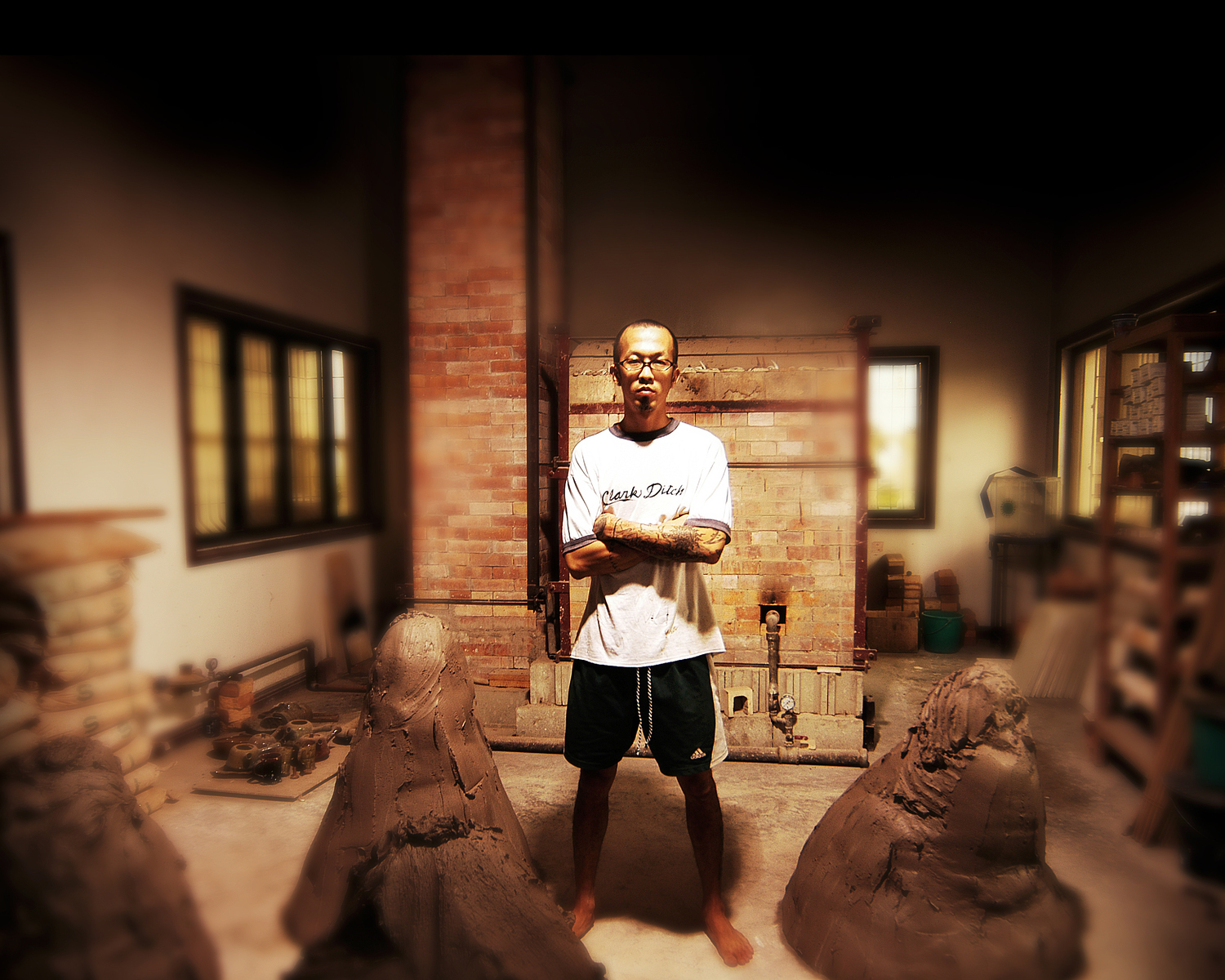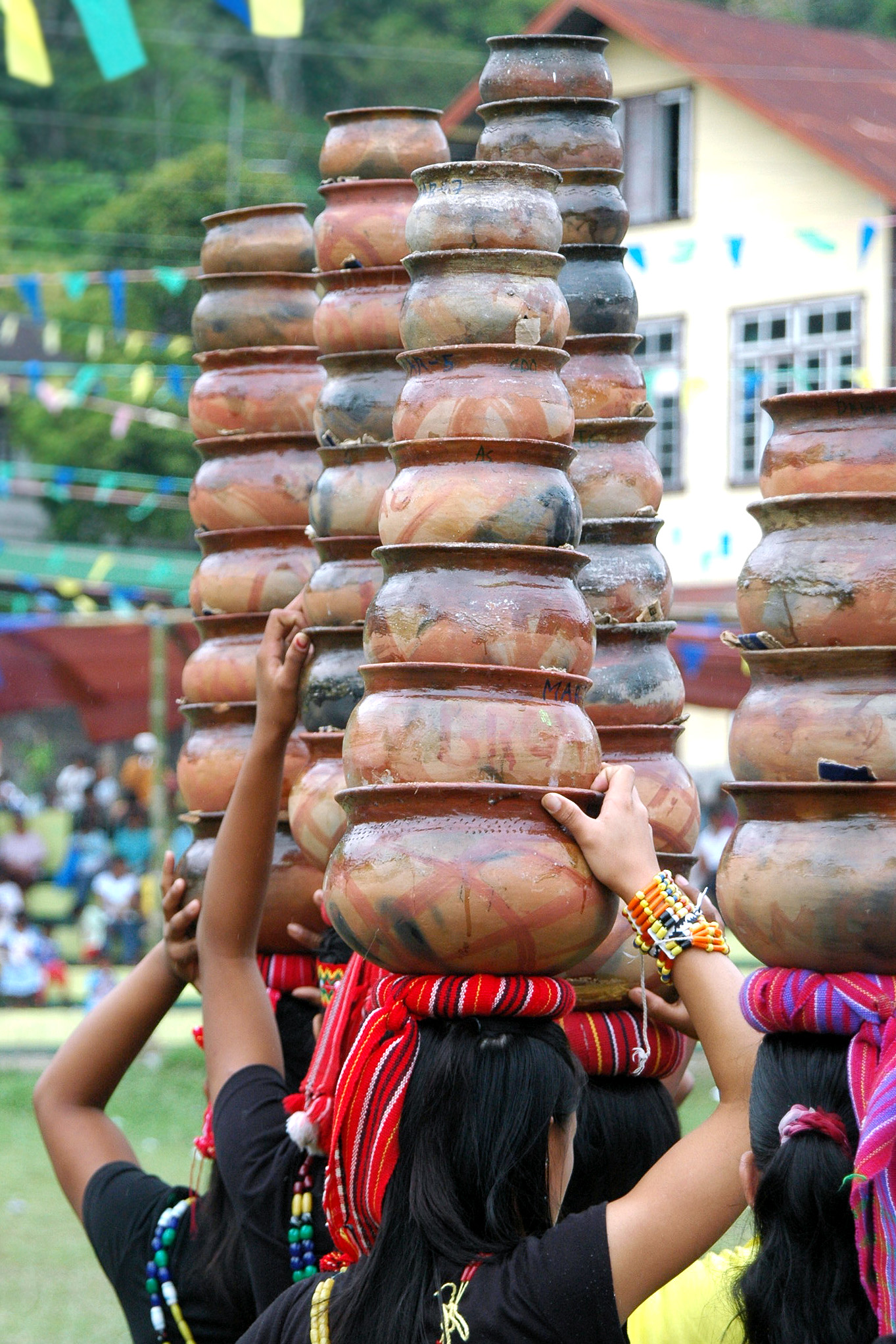Philippines
Historical evidence points to two facts about ceramic wares in the Philippines: that there existed traditional forms of pottery making by different tribal communities; and that these traditional forms have been abandoned/displaced with the advent of Chinese porcelain.
One of the first historical accounts of pottery in the Philippines came from reference to Chinese porcelain. According to Finlay who wrote about the history of porcelain in the world:
In the Philippines, the beginning in the Song period, the flood of Chinese porcelain dealt a deathblow to traditional pottery styles. Given the thousands of tons of porcelain shards excavated in the islands, the period of Filipino history from the Tang to the arrival of the Spanish at Cebu in 1565 has been termed "the Porcelain Age.
The peoples of Borneo and the Philippines saw them (porcelain) in magical terms. The jars were given names, inducted into clans, married to each other, buried with ceremony, and passed down through generations; they were seen to converse, chase one another, turn into animals and forest spirits, take human form, heal the sick, tell fortunes, and issues prophecies.
The Palawan people of Palawan Island, between Borneo and the Philippines, believed that shooting stars striking the earth gave birth to porcelain jars. The Tinguian from the region of Abra in the Philippines and the Ifugao from the province of that name regarded the jars as gifts from gods who lived in the sky and in local caves. The Tagbanuaon Palawan Island summoned deities and spirits to tribal feasts by tapping their porcelain jars to give a musical ring. Blowing across the tops of the vessels produced vibrating moans, which were read as divine warnings against calamity.
Similar to other archipelagic countries in Southeast Asia such as Indonesia and Malaysia, the regard for pottery in earlier times in the context of the supernatural world meant that the peoples in these areas viewed porcelain as having more supernatural powers than their earthenware. Hence, traditional forms of pottery making were abandoned after Chinese porcelain was introduced.
But the ancient Philippines had a very rich tradition of pottery as verified by the finds at Ayub Cave in South Cotabato and other parts of the islands. Japanese texts mentioned trading expeditions to the island of Rusun (Luzon) for the highly-prized Rusun and Namban jars. Japanese texts were very specific about these jars being made in Luzon. The Tokiko, for example, calls the Rusun and Namban jars, Ru-sun tsukuru or Lu-sung ch'i (in Chinese), which means simply "made in Luzon." These Rusun jars, which had rokuru (wheel mark), were said to be more precious than gold because of its ability to act as tea canisters and enhance the fermentation process.
Many of the important pottery traditions that spread into the Oceania region had their counterparts in the Philippines including the well-known Lapita culture. This quote from Wilhelm Solheim illustrates the matter:
"I hypothesize that the Sa-huynh Kalanay and Lapita pottery traditions had a common origin somewhere in the Palawan-Sarawak-Sulu Sea-Sulawesi area and that it was at this point in time and space that a second and main stage in the spread of the Austronesian languages began."
The finds at Ayub Cave in South Cotabato again verified the great pottery tradition of the Philippines. In terms of quantity and quality, these artifacts have no match in Southeast Asia for such an early time period. One interesting question is whether or not the Philippines ever developed an export industry for pottery. Generally it is known that the Thais had developed quite a flourishing industry, which is sometimes considered unique in SE Asia. However, it is well-documented that the Philippines was in fact a major destination of pottery buyers from the islands of Japan at least. Japanese texts mention trading expeditions to the island of Rusun (Luzon) going well back before the Spanish period. What they sought were the highly-prized Rusun and Namban jars. In fact, these jars were far more precious than gold to the Japanese because of their ability to act as tea canisters. Japanese texts were very specific about these jars being made in Luzon. The Tokiko, for example, calls the Rusun and Namban jars, Ru-sun tsukuru or Lu-sung ch'i (Chinese), which means simply "made in Luzon." The only question is whether the pottery makers were Filipinos trained in the Chinese art, or local Japanese or Chinese, or a combination of both. In the Tokiko it mentions that all Rusun jars had this marking known as the rokuru (wheel mark). Those familar with Philippine ethnography will know that this spiral is commonly used by many of the Philippine tribes. The following symbols were used to identify which kiln was used to make the jar: identified "Imbe" jars, meant jars coming from Bizen kiln, and mark three times meant a canister from the same oven. A jar with this mark is said to be made of Namban clay. This marking corresponds to the syllable la in Pampanga; Tagbanua for ka ("Chinese Pottery," Field Museum of Natural History-Anth., vol.xii, Jul.1912) Of course, the symbol for la can also be the same as that for lu, and so this might correspond to the symbol said to stand for Lu in Rusun-no kokuji (Luzon national writing). According to the Tokiko, certain types of Rusun jars were distinguished by this character. De Morga mentions that Japanese traders were still coming in large numbers for these jars during his time, and that they were willing to spend great sums for them. Apparently work on these jars continued in the North, possibly among the unconquered Igorots, for De Morga had no knowledge of such current production. Later, the knowledge may have again trickled down to Vigan, where a flourishing industry of Burnay jar manufacture survives to this day. Although the Japanese described very high quality jars coming from the Philippines, not all were of elegant nature. In fact, De Morga had some disdain for some of the jars that the Japanese were buying, so they could have been similar to the well-known balanga and other jars in use today. These jars are generally handed down as heirlooms and are noted for their qualities in enhancing the fermentation process. Possibly one of the Japanese uses for the Rusun jars was fermentation of products like Kombucha and Umeboshi plums. Indeed a Japanese acquaintance stated that their family in rural Japan used old Rusun jars for exactly this purpose up to this day.
Another interesting type of pottery was the "dragon jar." Although these jars shown certain Chinese or Japanese influence, no kiln from China or elsewhere has yet been discovered that produced these jars (to the author's knowledge). Indeed, no true samples of these jars have even been found in China! However, even many of the humblest tribal families possessed at least one of these jars in some areas of the Philippines. These are very fine works and are a tribute to the makers, who likely resided in the Philippines, if not Filipinos themselves. It should be noted that the Japanese were very careful about classification of pottery. Even in foreign countries like Korea, they were careful to distinguish the differences between indigenous Korean and imported Chinese-school pottery made in Korea. In the case of the Rusun and Namban jars, they distinctly classified them as local manufactures.
Pottery in contemporary times
In contemporary period, utilitarian pottery is very much a thriving business. Local pottery especially in the northern part of the Philippines such as the Ilocos region survives through the steady local purchases of pots for various uses: as cooking wares, containers for drinking water, fish sauce, and other delicacies, and as plant adornments.
In Manila, pottery has been elevated to art form. Heavily influenced by different local and foreign pottery traditions and technologies, several potter/artists and groups have produced glazed ceramics in the style of antique wares that were meant to be used for decorative purposes. This pottery style has also been introduced to the urban public through the establishment of pottery schools and regular pottery exhibitions/shows in art galleries. It has captured the upscale market that regularly supports the works by these potter/artists.
Texts were culled from the following sources:
http://www.geocities.com/Tokyo/Temple/9845/tech.htm
http://en.wikipedia.org/wiki/Ancient_Philippine_civilization






